FutuRaM involves 28 partners (associations, companies, universities) and over 100 experts from different scientific and technical fields covering six waste streams: batteries, electrical and electronic equipment, vehicles, mining; slags and ashes, and construction and demolition. Our researchers often engage in passionate conversations across their fields and most importantly about the relevance of this project. Their enthusiasm is fascinating so without further ado, meet the researchers behind FutuRaM!
Please introduce yourself both personally and professionally in a few sentences. We’d like to know a bit more about your day-to-day job, where do you live, what did you study.
Greetings all! I’m Teemu Karlsson, serving as a Senior Scientist within the Circular Economy unit of the Geological Survey of Finland (GTK). My background is in geology, a field I formally explored at the University of Turku where I earned my MSc in 2008. My journey with GTK began in 2011, and since then, my work has spanned several interesting areas, from mine waste characterisation and environmental risk assessments to mine closure. More recently, my focus has broadened to encompass aspects of circular economy and investigating mine waste as a potential source of secondary raw materials.
Of all these areas, mine waste characterization holds a special place in my researcher’s heart. While investigating this topic at GTK I collaborated with the Luleå University of Technology in Sweden where I had the privilege of earning a PhD in 2022. While my professional affiliation lies with GTK’s office in Kuopio, central Finland, my day-to-day work takes mostly place at home office in the small town of Siilinjärvi. Nestled a short distance from Kuopio, Siilinjärvi is mostly known for its large apatite mine.
How did you end up studying and working in this field?
I must confess, my journey to becoming a geologist working in mining environments wasn’t a childhood dream. In fact, I harboured aspirations of becoming an archaeologist, inspired by the thrilling exploits of Indiana Jones. However, I soon realized that archaeology in Finland bore little resemblance to the adventurous scenarios in the movies. My choice to study geology was somewhat of a last-minute decision before the university application deadline. It was driven by my broad interest in natural sciences, the promise of field work under the open sky, and a favourable ratio of applicants to admitted students. Looking back, I can see that my path to becoming a researcher at GTK wasn’t a straight line, but rather a testament to the magic that can happen when curiosity (or sometimes laziness) meets opportunity.
How would you explain your favourite research project (even if unrelated to FutuRaM) to somebody outside the scientific community? Why did it capture your attention?
One of my favourite research projects so far is a GTK’s self-funded project “Research and Modeling Methods for Mine and Industrial Sites” (2017-2020), where I was given the autonomy to innovate and create tools for mine waste characterization. The main objective of mine waste characterization is to predict the long-term behaviour of the waste material and the quality of seepage waters originating from the mine waste areas. This information is needed for example to design the waste areas, water treatment needs and closure options. The results were interesting and could be published in scientific journals, which significantly advanced my PhD work. In general, a good project is one where I can use my imagination and investigate something new and useful.
What should we know about GTK and how does your expertise and research at the Geological Survey of Finland relate to FutuRaM?
GTK, founded in 1885, has been around longer than the Republic of Finland itself, which got independence from Russia in 1917. GTK is a major operator in the realm of geological resources. We have more than 400 experts who specialize in areas like mineral economy, circular economy, and energy solutions, and work both within Finland and globally. We offer expertise for mineral resources policies, map geological resources, and produce geological information to support informed decisions across various sectors, with the goal of fostering a sustainable and carbon-neutral world. The strategic focus of GTK has a strong link to the objectives of the FutuRaM project. Also, my expertise in mine waste characterization and mining environments aligns well with the FutuRaM project. Through my work at GTK, I provide insights into the potential of mine waste as a resource, directly supporting the objectives of FutuRaM.
What do you find the most intriguing about this project and why? What are you hoping to achieve with FutuRaM?
For GTK the timing of the project is perfect, as we were anyway starting to collect information about secondary resources and thinking how to enhance the management of them. The project will give an excellent boost to our database work and it supports future work by producing helpful guiding documents. In general, it’s great to work in a project with concrete actions to boost circular economy and reuse of secondary resources.
How would you simplify and explain the goal of FutuRaM to a passerby who has never heard of EU funded projects and CRMs?
FutuRaM is a European project securing essential raw materials for the future. It focuses on critically important materials and the secondary sources for them, for example mine waste. The project develops a knowledge base to inform decision-making about the secondary sources. This includes resource modelling considering various factors, and the utilization of case studies.
